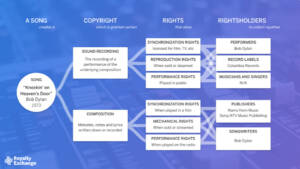The Impact of Technology on the Music Industry

Introduction
Brief history of music industry
The music industry has undergone significant changes over the years, with technology playing a crucial role in shaping its evolution. In the early days, music was primarily distributed through physical formats such as vinyl records, cassette tapes, and CDs. However, with the advent of digital technology, the industry has shifted towards online distribution and streaming services. This has led to a decline in physical sales and a rise in digital revenue. The rise of social media and online platforms has also given artists more control over their music and allowed them to connect with fans directly. Overall, technology has transformed the music industry, creating new opportunities and challenges for artists, record labels, and consumers alike.
Overview of technology’s impact on music industry
The impact of technology on the music industry has been significant and far-reaching. With the advent of digital music and the internet, the way music is created, distributed, and consumed has undergone a massive transformation. The rise of streaming services has made music more accessible than ever before, but it has also led to concerns about fair compensation for artists. Additionally, advancements in music production software and hardware have made it easier for musicians to create high-quality recordings from the comfort of their own homes. Overall, technology has both democratized and disrupted the music industry, and its impact is likely to continue to be felt for years to come.
Digital Music Distribution
Evolution of digital music distribution
The evolution of digital music distribution has been a game-changer for the music industry. With the rise of digital music platforms such as iTunes, Spotify, and YouTube, music has become more accessible to listeners worldwide. This has allowed for independent artists to gain exposure and reach a wider audience without the need for a major record label. However, it has also led to a decline in physical album sales and a shift towards streaming services. The music industry has had to adapt to this new digital landscape, with record labels and artists alike needing to focus on digital marketing strategies and creating content for online platforms. Overall, the evolution of digital music distribution has revolutionized the way music is consumed and distributed, and will continue to shape the industry in the years to come.
Advantages and disadvantages of digital music distribution
Advantages and disadvantages of digital music distribution have been a topic of debate in the music industry for years. One of the biggest advantages of digital distribution is the ease and speed with which music can be distributed to a global audience. This has opened up new markets for artists and allowed them to reach fans in countries they may never have been able to tour in. However, the downside of digital distribution is the impact it has had on physical sales, which have declined significantly in recent years. Additionally, the rise of streaming services has led to concerns about fair compensation for artists, with many arguing that the current payment models are not sustainable. Despite these challenges, digital distribution remains a crucial part of the music industry and is likely to continue to evolve in the years to come.
Impact on music sales and revenue
The impact of technology on music sales and revenue has been significant. With the rise of digital music platforms, such as iTunes and Spotify, physical album sales have declined. However, streaming services have become a major source of revenue for the music industry. In 2019, streaming accounted for 56.1% of the global music industry’s revenue. Additionally, technology has made it easier for independent artists to distribute and promote their music, leading to a more diverse and competitive industry. Overall, while technology has disrupted traditional revenue streams, it has also created new opportunities for artists and the industry as a whole.
Music Production and Recording
Evolution of music production and recording technology
The evolution of music production and recording technology has had a significant impact on the music industry. In the past, recording music was a time-consuming and expensive process that required a lot of equipment and expertise. However, with the advent of digital technology, recording music has become much easier and more accessible. Today, musicians can record high-quality music in their own homes using affordable software and equipment. This has led to a democratization of the music industry, allowing more artists to create and distribute their music without the need for a record label. Additionally, advancements in music production technology have allowed for new and innovative sounds to be created, pushing the boundaries of what is possible in music.
Advantages and disadvantages of music production and recording technology
Advantages and disadvantages of music production and recording technology have been a topic of debate for years. On one hand, technology has made it easier for musicians to record and produce their own music without the need for expensive studios or equipment. This has led to a rise in independent artists and a democratization of the music industry. However, on the other hand, the ease of access to technology has also led to a saturation of the market, making it harder for artists to stand out and gain recognition. Additionally, the use of technology in music production has led to a homogenization of sound, with many songs sounding similar due to the use of the same software and techniques. Overall, while technology has certainly had a significant impact on the music industry, it is important to consider both the advantages and disadvantages in order to fully understand its effects.
Impact on music quality and creativity
The impact of technology on music quality and creativity has been both positive and negative. On the one hand, technology has allowed for greater precision and control in the recording and production process, resulting in higher quality recordings and more polished final products. However, some argue that the ease of access to technology and software has led to a homogenization of sound and a lack of experimentation and risk-taking in the industry. Additionally, the use of auto-tune and other vocal processing tools has been criticized for potentially stifling the natural creativity and uniqueness of an artist’s voice. Ultimately, the impact of technology on music quality and creativity is a complex and ongoing conversation within the industry.
Music Streaming Services
Evolution of music streaming services
The evolution of music streaming services has revolutionized the way people consume music. With the rise of platforms like Spotify, Apple Music, and Tidal, music lovers can access millions of songs at their fingertips. This has led to a decline in physical album sales and a shift towards digital streaming. While this has been a game-changer for consumers, it has also presented challenges for artists and record labels. The revenue generated from streaming services is often lower than traditional album sales, leading to debates about fair compensation for artists. Despite these challenges, music streaming services continue to dominate the industry and shape the future of music consumption.
Advantages and disadvantages of music streaming services
Music streaming services have revolutionized the way people consume music. One of the biggest advantages of music streaming services is the convenience they offer. With just a few clicks, users can access millions of songs from anywhere in the world. Additionally, music streaming services have made it easier for independent artists to reach a wider audience without the need for a record label. However, there are also some disadvantages to music streaming services. One of the biggest concerns is the impact on artist royalties. Many artists argue that they are not being fairly compensated for their work, as streaming services pay a fraction of a penny per stream. Another concern is the impact on album sales, as many consumers now prefer to stream music rather than purchase physical copies. Despite these concerns, music streaming services continue to grow in popularity and are likely to remain a major force in the music industry.
Impact on music consumption and revenue
The impact of technology on music consumption and revenue has been significant. With the rise of digital music platforms such as Spotify, Apple Music, and Tidal, consumers now have access to a vast library of music at their fingertips. This has led to a decline in physical album sales, but an increase in streaming revenue. In 2019, streaming accounted for 56.1% of the global music industry’s revenue. Additionally, technology has made it easier for independent artists to distribute and promote their music, leading to a more diverse and competitive industry. However, the shift towards digital music has also raised concerns about fair compensation for artists and the sustainability of the music industry as a whole.
Social Media and Music Marketing
Evolution of social media and music marketing
The evolution of social media has had a significant impact on the music industry, particularly in terms of marketing and promotion. Social media platforms such as Facebook, Twitter, Instagram, and YouTube have provided artists with a direct line of communication to their fans, allowing them to share new music, tour dates, and other updates instantly. Additionally, social media has enabled artists to build their brand and connect with new fans in ways that were previously impossible. With the rise of influencer marketing, social media has also become an important tool for music marketers to reach new audiences and promote new releases. As social media continues to evolve, it is likely that it will play an even greater role in the music industry in the years to come.
Advantages and disadvantages of social media and music marketing
Advantages and disadvantages of social media and music marketing are two sides of the same coin. On one hand, social media has revolutionized the way musicians can connect with their fans and promote their music. Platforms like Facebook, Instagram, and Twitter allow artists to reach a wider audience and engage with fans in real-time. However, the downside is that social media can also be overwhelming and time-consuming, with many artists feeling the pressure to constantly create content and maintain a strong online presence. Additionally, the rise of streaming services has made it more difficult for artists to earn a living from their music, as they receive only a fraction of a penny per stream. Overall, while social media and music marketing have their advantages, they also come with their own set of challenges and drawbacks.
Impact on music promotion and fan engagement
The impact of technology on music promotion and fan engagement has been immense. With the rise of social media platforms, artists can now connect with their fans on a more personal level and promote their music directly to them. This has led to a shift in the way music is marketed, with artists relying less on traditional methods such as radio and TV and more on social media influencers and online streaming services. Additionally, technology has made it easier for fans to discover new music and connect with other fans who share their interests. This has created a more engaged and interactive fan base, with fans playing an increasingly important role in shaping the direction of the music industry.
Copyright and Piracy
Evolution of copyright and piracy in music industry
The evolution of copyright and piracy in the music industry has been a major challenge for the industry. With the rise of digital technology, it has become easier for people to access and share music without paying for it. This has led to a decline in revenue for artists and record labels. To combat piracy, the music industry has implemented various measures such as digital rights management (DRM) and legal action against infringers. However, these measures have not been entirely successful in stopping piracy. The industry is now exploring new business models such as streaming services and direct-to-fan sales to adapt to the changing landscape.
Advantages and disadvantages of copyright and piracy laws
Advantages and disadvantages of copyright and piracy laws have been a topic of debate for years. On one hand, copyright laws protect the intellectual property of artists and ensure that they receive fair compensation for their work. This encourages creativity and innovation in the music industry. However, strict copyright laws can also limit the availability of music and make it difficult for consumers to access it. Piracy laws, on the other hand, aim to prevent the illegal distribution of copyrighted material. While this can help protect artists’ rights, it can also be difficult to enforce and may not always be effective in preventing piracy. Ultimately, finding a balance between protecting artists’ rights and ensuring access to music for consumers is crucial for the continued growth and success of the music industry.
Impact on music industry revenue and artist compensation
The impact of technology on the music industry has been both positive and negative when it comes to revenue and artist compensation. On one hand, the rise of digital streaming services has made music more accessible to consumers, leading to an increase in revenue for the industry as a whole. However, this has also led to a decrease in revenue for artists, as streaming services pay out much lower royalties than traditional album sales. Additionally, the ease of digital piracy has made it difficult for artists to protect their intellectual property and receive fair compensation for their work. Overall, while technology has brought about many benefits for the music industry, it has also created new challenges that must be addressed in order to ensure fair compensation for artists.
Conclusion
Summary of technology’s impact on music industry
In summary, technology has had a significant impact on the music industry, both positive and negative. On the positive side, it has made music more accessible to a wider audience, allowed for easier distribution and promotion of music, and enabled artists to create and produce music more efficiently. However, technology has also led to issues such as piracy and illegal downloading, which have had a detrimental effect on the industry’s revenue. Additionally, the rise of streaming services has changed the way in which music is consumed and has led to debates over fair compensation for artists. Overall, technology has fundamentally altered the music industry and will continue to do so in the future.
Future outlook for music industry and technology
The future outlook for the music industry and technology is promising. With the advancements in technology, the music industry is expected to continue to evolve and adapt to new trends. The rise of streaming services has already changed the way people consume music, and it is likely that this trend will continue. Additionally, the use of artificial intelligence and machine learning in music creation and distribution is expected to increase. This could lead to more personalized music experiences for listeners and new opportunities for artists to create and distribute their music. Overall, the future of the music industry and technology is exciting and full of potential.








